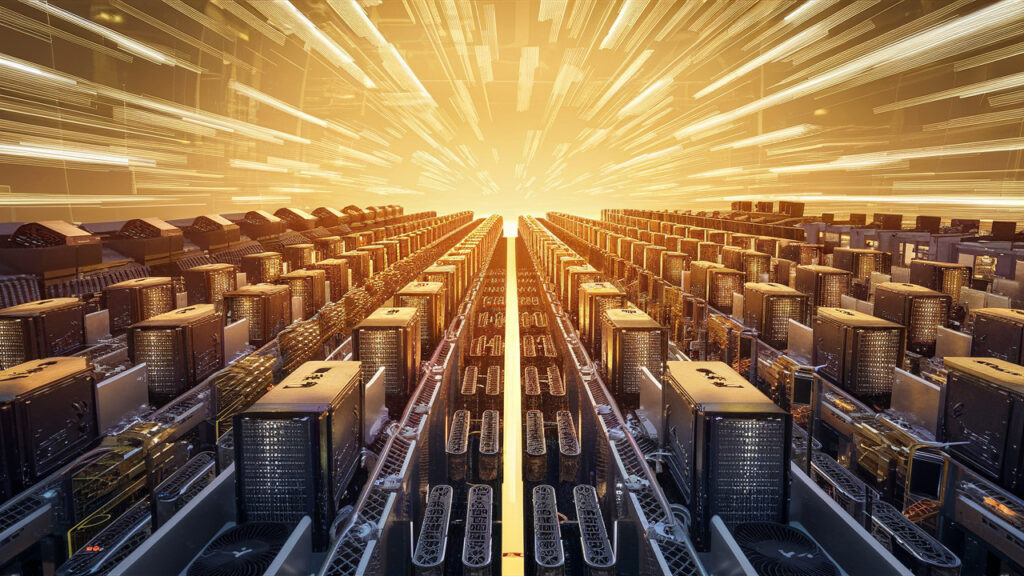The Comprehensive Guide to Crypto Mining Software
In the fast-paced world of cryptocurrency, mining plays a crucial role in processing transactions and securing the blockchain network. But for newcomers and seasoned miners alike, the vast array of crypto mining software available can be overwhelming. This guide is designed to demystify crypto mining software, making it accessible and understandable for beginners. We’ll cover what crypto mining software is, how it works, and how to choose the right one for your needs.
Understanding Crypto Mining Software
At its core, crypto mining software is a specialized application designed to utilize your computer’s hardware resources—such as the CPU, GPU, or ASICs (Application-Specific Integrated Circuits)—to solve complex mathematical puzzles. This process validates transactions on the blockchain and, in turn, rewards miners with newly minted cryptocurrency as a form of incentive.
How Crypto Mining Software Works
Crypto mining software interfaces with the blockchain of your chosen cryptocurrency and your hardware. It compiles transactions into blocks, then solves the cryptographic puzzles to add these blocks to the blockchain. Each cryptocurrency has its unique puzzle or algorithm, the most famous being Bitcoin’s SHA-256.
The software constantly communicates with the cryptocurrency’s network to get transaction data and submit completed work. Moreover, it monitors your mining rig’s performance, including temperature, hash rate, and energy consumption, providing valuable insights to optimize efficiency and profitability.
Choosing the Right Crypto Mining Software
Selecting the right crypto mining software depends on several factors:
- Compatibility with Your Hardware: Not all mining software works with all types of hardware. Some are optimized for GPUs, while others are for ASICs or CPUs. Ensure the software you choose is compatible with your setup.
- Supported Cryptocurrencies: Some mining applications are specific to a single cryptocurrency, while others support multiple coins. Consider your mining goals and choose software that aligns with them.
- Ease of Use: If you’re a beginner, look for software with a user-friendly interface and robust support documentation.
- Features: Advanced features like overclocking controls, remote monitoring, and mining pool support can be beneficial for optimizing your mining operation.
- Fee Structure: Some mining software charges a fee, typically a percentage of your mining profits. Compare fee structures to find a cost-effective option.
Examples of Popular Crypto Mining Software
- CGMiner: One of the oldest and most popular mining applications, CGMiner is versatile, supporting a wide range of hardware and cryptocurrencies. It’s open-source and offers detailed control over your mining rigs.
- NiceHash: Ideal for beginners, NiceHash simplifies the mining process by allowing users to mine various cryptocurrencies without managing individual miners. It operates on a pay-per-share model, automatically switching to profitable cryptocurrencies.
- Hive OS: A comprehensive management platform that allows you to efficiently manage and monitor multiple mining rigs. It supports a wide variety of GPUs and ASICs and offers advanced features like overclocking and temperature monitoring.
Tips for Successful Crypto Mining
- Stay Updated: Cryptocurrency mining software and algorithms evolve rapidly. Regularly update your software to ensure optimal performance and security.
- Optimize Your Setup: Experiment with your hardware and software settings to find the most efficient configuration. This can significantly impact your profitability.
- Join a Mining Pool: Solo mining can be challenging, especially for popular cryptocurrencies. Joining a mining pool can increase your chances of earning rewards, albeit smaller ones, more frequently.
Advanced Mining Hardware
The evolution of mining hardware has been a game-changer in cryptocurrency mining, significantly affecting efficiency and profitability. Here’s a closer look at the latest technologies:
- GPUs (Graphics Processing Units): Versatile and widely used for mining various cryptocurrencies. The latest models offer improved hash rates and energy efficiency. When selecting a GPU, consider its hash rate, power consumption, and cost to determine its profitability.
- ASICs (Application-Specific Integrated Circuits): Designed specifically for mining a particular cryptocurrency, ASICs offer unmatched efficiency for their target algorithm but lack the flexibility of GPUs. The rapid advancement in ASIC technology means newer models can quickly outpace older versions, so staying informed about releases is vital.
- FPGAs (Field Programmable Gate Arrays): Sit between GPUs and ASICs in terms of flexibility and efficiency. FPGAs can be reprogrammed for different algorithms, offering a balance between the specialized power of ASICs and the adaptability of GPUs.
When investing in mining hardware, consider the longevity of the technology, potential resale value, and how quickly it might become obsolete.
Mining Pool Strategies
Mining pools are collective groups of miners who combine their computational resources to compete more effectively for block rewards. Here’s what to consider when choosing a mining pool:
- Payout Scheme: Different pools use various methods to distribute rewards. Common schemes include Pay-Per-Share (PPS), where miners get paid for each share submitted, and Proportional (PROP), where rewards are divided according to the number of shares each miner contributes.
- Pool Size: Larger pools offer more regular payouts, but the rewards are smaller since they’re split among more miners. Smaller pools might offer larger payouts but less frequently. Decide what balance works best for your needs.
- Fees: Mining pools typically charge a fee, ranging from 0% to 3%. While a lower fee is attractive, also consider the pool’s reliability, payout scheme, and support services.
Energy Efficiency and Sustainability
The environmental impact of crypto mining, particularly its energy consumption, has been a point of contention. Here’s how miners are addressing sustainability:
- Renewable Energy Sources: Many miners are turning to renewable energy, such as solar or wind power, to reduce their carbon footprint and lower electricity costs.
- Energy-Efficient Hardware: Opting for hardware with a high hash rate to power consumption ratio can significantly decrease energy usage.
- Heat Recapture: Some innovative mining operations are finding ways to repurpose the heat generated by mining rigs, from heating homes to powering greenhouses.
Cryptocurrency Tax Implications
Navigating the tax landscape for cryptocurrency mining is crucial. In many jurisdictions, mined cryptocurrencies are considered taxable income based on their market value at the time of receipt. Here’s what you need to know:
- Record-Keeping: Maintain detailed records of your mining activities, including the date of mining, the cryptocurrency’s market value at that time, and the amount mined. These records are essential for accurate tax reporting.
- Deductible Expenses: Expenses related to your mining operation, such as electricity, internet, hardware depreciation, and even home office costs, may be deductible. Consult with a tax professional to ensure you’re maximizing your deductions while remaining compliant.
- Reporting Income: Depending on your country’s tax laws, you may need to report your mining income quarterly or annually. Failing to report cryptocurrency income can lead to penalties and audits.
Security Practices for Miners
With the increasing value of cryptocurrencies, miners must prioritize security to protect their assets and hardware. Implement these practices:
- Secure Your Wallet: Use a hardware wallet for storing your mined cryptocurrencies, as they are less vulnerable to hacking than online wallets. Regularly back up your wallet and keep the backup in a secure location.
- Update Regularly: Keep your mining software and hardware firmware up to date to protect against vulnerabilities. Use reputable sources for updates to avoid downloading malicious software.
- Network Security: Protect your mining rig from unauthorized access by using strong passwords, enabling two-factor authentication, and installing a robust firewall. Consider using a dedicated network for your mining operations to further enhance security.
Future Trends in Crypto Mining
The crypto mining industry is subject to rapid changes, driven by technological advances, regulatory shifts, and market dynamics. Here are some trends to watch:
- Sustainability Focus: As environmental concerns continue to gain traction, the future of mining will likely see a greater emphasis on energy efficiency and the use of renewable energy sources.
- Regulatory Changes: Governments around the world are beginning to introduce regulations for cryptocurrencies, including mining activities. Staying informed about regulatory changes in your jurisdiction is crucial.
- Decentralization Efforts: In response to the centralization of mining power among large pools and farms, there may be a push towards more decentralized mining methods to ensure the security and fairness of blockchain networks.
Conclusion
Crypto mining can be a rewarding venture, both financially and as a hobby. With the right crypto mining software, you can participate in securing blockchain networks while earning cryptocurrency rewards. Whether you’re just starting or looking to optimize your current setup, understanding the basics of mining software is the first step towards a successful mining operation.


